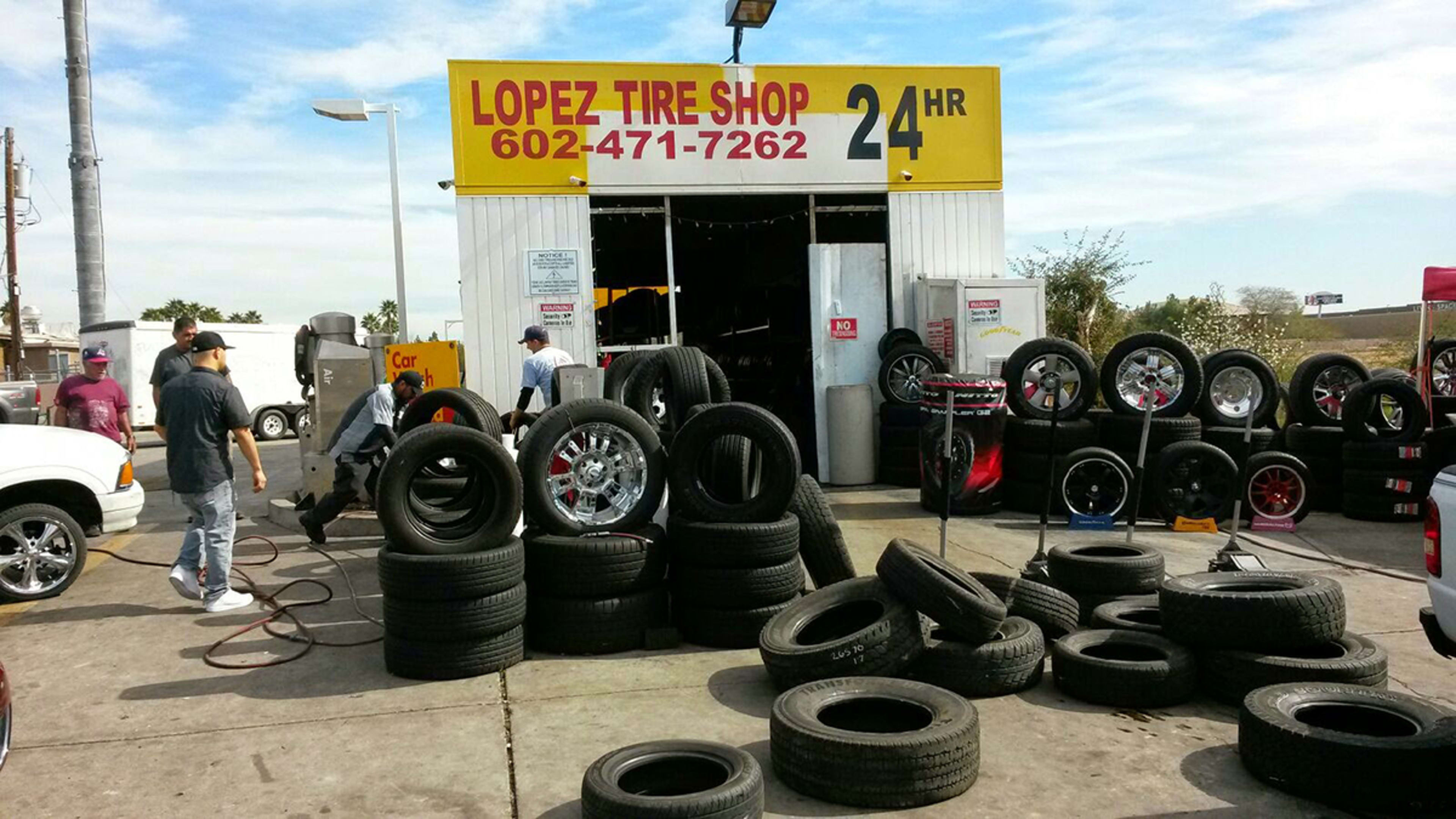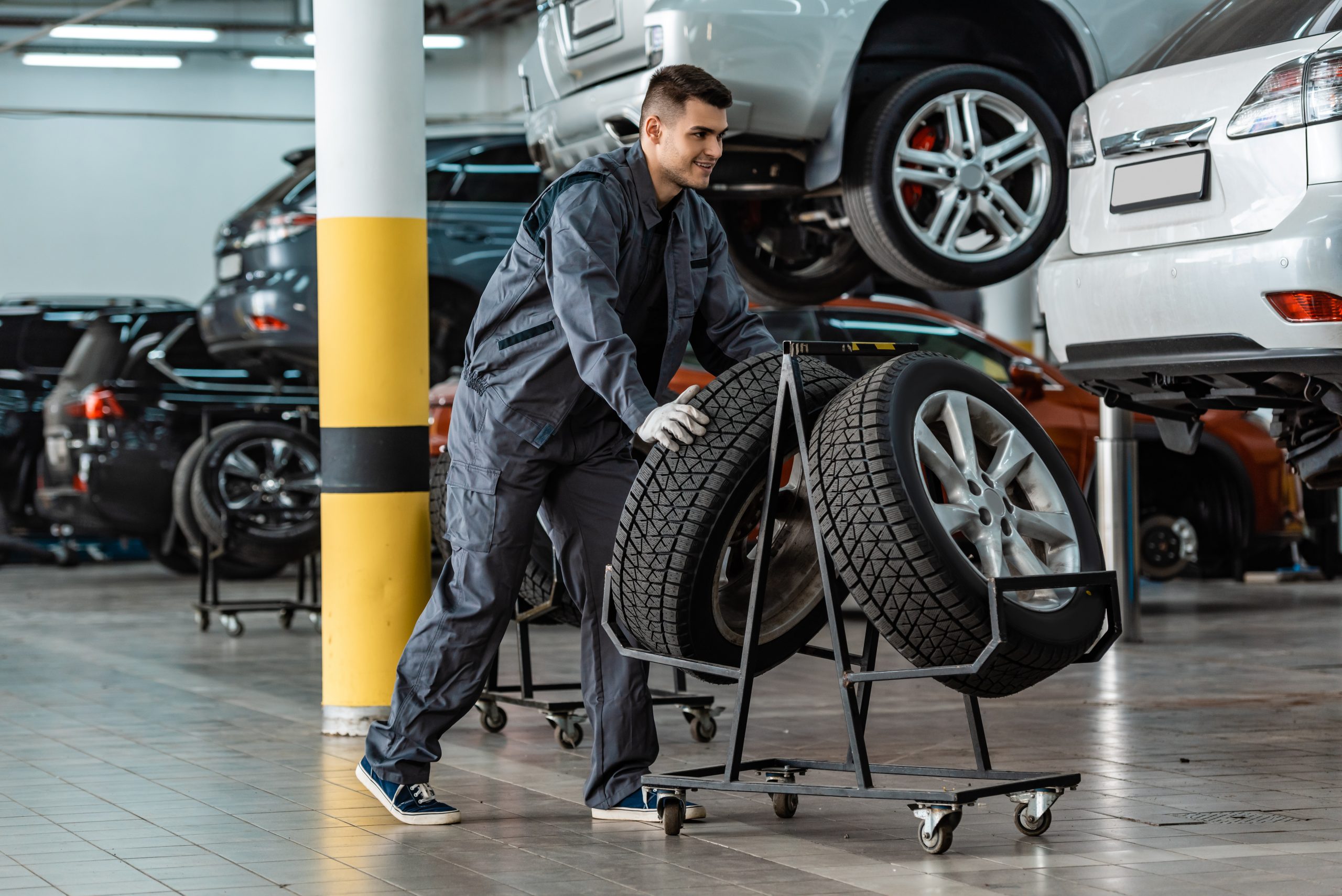The Science Behind Tire Fixing and Safety And Security
When it comes to the detailed globe of tire maintenance and security, there exists a realm of scientific research that frequently continues to be undetected by the ordinary motorist - tire shop near me. The products that make up a tire, the effect of tire pressure on general security, the ramifications of tread wear, the elaborate dynamics of tire grip, and the often-overlooked significance of appropriate wheel alignment all play vital duties in ensuring a vehicle runs safely and successfully. As we browse via the complexities of tire fixing and security, it ends up being evident that a much deeper understanding of these clinical principles is not only valuable but necessary for each vehicle driver when driving
Tire Structure and Performance
What products make up the composition of tires, and how do these elements contribute to their capability on the roadway? Steel cables are incorporated to enhance the tire's toughness and assist it preserve its shape under different roadway conditions.
The rubber compounds supply hold and grip, permitting the tire to stick to the roadway surface area and provide security during velocity, braking, and cornering. On the whole, the careful option and mix of these products ensure that tires can perform properly and securely on numerous roadway surface areas and problems.
Influence of Tire Stress on Safety And Security
Keeping proper tire pressure is crucial for making sure optimal security and performance while driving. The effect of tire stress on safety and security can not be overstated. Underinflated tires are susceptible to overheating, which can bring about tire blowouts, especially at high rates. In addition, reduced tire pressure affects the handling and responsiveness of the automobile, boosting the threat of crashes, specifically during emergency maneuvers. On the other hand, overinflated tires have less contact with the road surface area, lowering traction and triggering unequal wear on the tire footsteps. This compromises the vehicle's stability and braking performance, posturing a substantial safety danger. Appropriately inflated tires also play an essential role in gas effectiveness, as underinflated tires can boost rolling resistance, causing lowered gas mileage. Regularly inspecting and keeping the right tire pressure not just makes sure safety and security but additionally expands the lifespan of the tires, reducing substitute expenses in the lengthy run.
Footstep Put On and Its Ramifications
Proper tracking of tire step wear is critical for ensuring ideal performance and safety and security when driving. As tires use down, the depth of the tread reduces, minimizing the tire's capacity to preserve traction, especially in unsafe or damp conditions. The step pattern and deepness play a vital function in funneling water far from the tire to protect against hydroplaning and maintaining hold when traveling surface.
Signs of too much walk wear consist of bald spots, unequal wear, and the appearance of wear indicators. Bald places show localized wear, which can cause instability and enhanced danger of blowouts. Uneven wear may suggest problems with tire rising cost of living, suspension, or alignment components. Wear signs are built right into the tire tread and come to be visible when the walk deepness gets to a specific nadir, showing the demand for immediate replacement.

Comprehending Tire Grip Characteristics
Monitoring tire step wear not just makes certain optimum efficiency and security yet likewise directly affects the traction dynamics of the tires on various road surface areas. Tire grip is a vital element of automobile handling and security, as it determines the grasp in between the tires and the road. Grip dynamics differ relying on roadway problems such as completely dry sidewalk, wet roadways, snow, or ice.
Understanding tire grip characteristics is essential for vehicle drivers to adjust their driving habits according read what he said to the road problems. morris tire service. Consistently inspecting tire walk depth and condition can significantly improve grip performance, guaranteeing much safer driving experiences across numerous surface areas
Significance of Correct Wheel Placement
Ensuring correct wheel positioning plays an essential function in optimizing car efficiency and extending tire long life. Proper wheel placement involves adjusting the angles of the wheels to manufacturer requirements, making certain that they are perpendicular to the ground and alongside each other. When alignment is off, it can bring about uneven tire wear, reduced fuel effectiveness, and compromised handling.
One of the vital advantages of keeping proper wheel alignment is enhanced dealing with and stability. Misaligned wheels can cause the car to draw to one side, affecting steering control and overall driving experience. Furthermore, appropriate alignment advertises even tire wear, avoiding premature tire substitute and saving on maintenance expenses in the future.

Verdict
In final thought, the science behind tire fixing and safety and security is important for maintaining lorry efficiency and making certain driver safety and security. By comprehending tire structure, stress, tread wear, grip characteristics, and wheel placement, chauffeurs Visit This Link can protect against crashes and prolong the life expectancy of their tires. Correct maintenance and normal examinations are vital for optimal tire performance and general lorry security. By complying with these standards, drivers can drive with confidence recognizing that their tires remain in excellent problem.
The products that make up a tire, the influence of tire pressure on overall safety, the ramifications of step wear, the intricate characteristics of tire grip, and the often-overlooked value of proper wheel placement all play crucial functions in guaranteeing an automobile runs securely and successfully. On the other hand, overinflated tires have less call with the roadway surface, minimizing grip and causing uneven wear on the tire footsteps. Consistently inspecting and keeping the appropriate tire pressure not only guarantees security yet also expands the life expectancy of the tires, conserving on substitute costs in the lengthy run.
Monitoring tire tread wear not just ensures optimal efficiency and safety and security however likewise straight impacts the grip characteristics of the tires on different roadway surfaces. Tire traction is a vital aspect of lorry handling and security, as it establishes the hold in between the tires and the road.